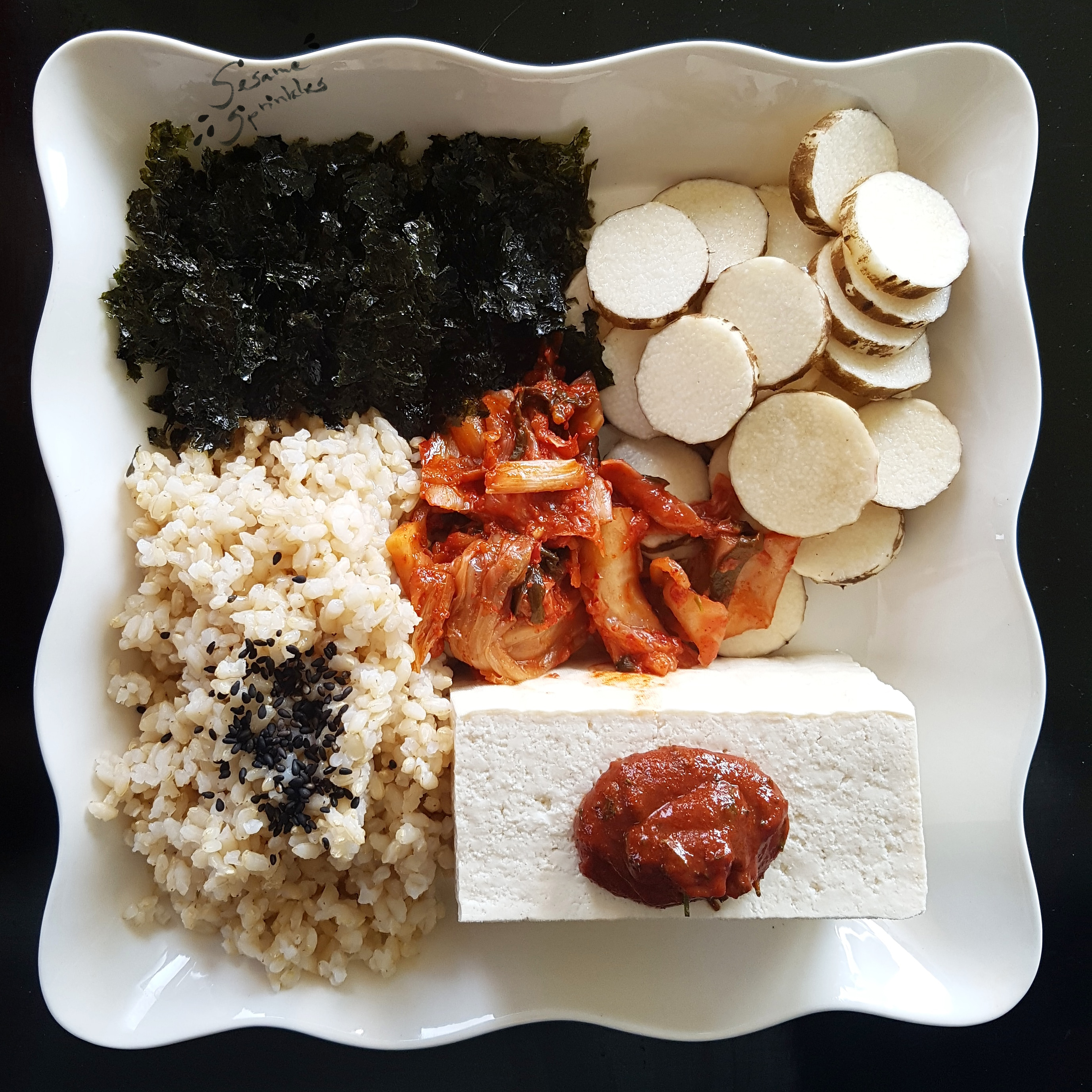Kimchi is perhaps the best known Korean dish, and it is rapidly gaining popularity in the Western world, while surfing the waves of health food enthusiasm as well as Hallyu.

But did you know that in Korea, kimchi is most of the times not vegan or vegetarian?
Among the many ingredients in kimchi, there is usually a sauce or paste made from fermented fish🐟, shrimp🦐 or other kinds of seafood 🦀. It is called jeot (젓) or jeotgal (젓갈) in Korean, the liquid variety being referred to as aekjeot (액젓). Unless you carefully examine kimchi and manage to identify tiny black dots as the eyes of tiny shrimp, this key ingredient remains hidden from view! 👀 With a sensitive nose, you may still be able to smell that something about the kimchi is fishy… 👃
Besides the distinct savory flavor (#umami #감칠맛), which many Koreans appreciate in their food, jeotgal adds proteins and minerals to the vegetable dish. While its nutritional value certainly contributes to kimchi being labelled as a “super food”, it is certainly not the only reason why kimchi is appreciated for its positive effect on your digestive system. Koreans strongly believe in kimchi being healthy and normally consume it with every meal, i.e. breakfast, lunch and dinner. At home and in Korean restaurants, you can expect there to be at least one type of kimchi as a [complimentary] side dish [in Korea, kimchi is naturally served free of charge].

There are countless varieties of kimchi, which not only differ with the vegetable starring as the main ingredient. Just to name a few, there is napa cabbage kimchi 🥬, cucumber kimchi 🥒, scallion or chive kimchi 🧅, radish kimchi 🥕 and several kinds of radish greens kimchi! 🌿 Basically, kimchi can be produced from all kinds of vegetables by salting, then seasoning and lastly fermenting them.
Overall, there are numerous production methods, types of kimchi as well as ingredients. On top of that, each family possesses their own recipe for making kimchi.
The diversity of kimchi is enormous and ever growing! Modern versions of kimchi feature even grapes, watermelon or kohlrabi as the main ingredient!
Here are some images to illustrate the variety of kimchi! 👇
[More images will be added gradually.]
Most frequent are those types of kimchi which consists of napa cabbage (baechu kimchi 배추김치) or cubes of radish (kkakdugi 깍두기). Occasionally, these are made without jeotgal, or with such small amounts that a sensitive nose can hardly discern anything fishy. 👃
As a rule of thumb, regular kimchi contains jeotgal. 🐟🦐
There are only a few classic varieties which normally do not contain jeotgal:
- 💧 Some types of “water kimchi” (mul kimchi 물김치), in which the vegetables are literally swimming in the pickling brine.
- The white version of napa cabbage kimchi (baek kimchi 백김치). ⚠️ In some cases, however, it may have been seasoned with jeotgal as well. 🐟 [Remember, every family has their own recipe!]
- ☸️ Kimchi made at a Buddhist temple is normally vegan.
- Dongchimi (동치미) is vegan by default. 🌱



However, it’s always best to confirm by asking. You can do so by saying something like this:
Kimchi-eneun hoksi jeotgal deureogasseoyo?
김치에는 혹시 젓갈 들어갔어요?
“Is there possibly fish sauce in the Kimchi?”
Whenever I asked restaurant staff to confirm whether they put jeotgal into their kimchi, the answer was either yes or they didn’t know. I always wondered whether that’s because they are afraid of giving away their secret recipe or because really nobody except for the old lady who works in the kitchen and has produced kimchi by herself all her life really knows! 🙃

Anyways. If you want to be 100% sure about what you’re eating, bear in mind that kimchi is most likely not vegan.
Apart from that, making kimchi at home by yourself is another option for enjoying vegan kimchi free from any animal-based ingredients! 👨🍳🧑🏻🍳
It just takes time, manual work and good spirits in the kitchen!

.
.
















